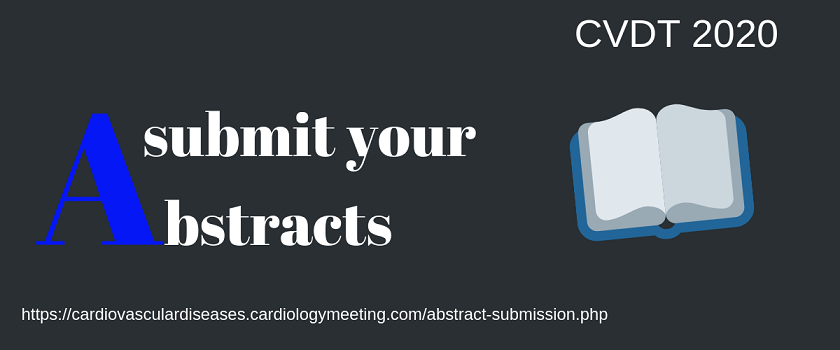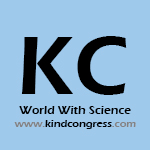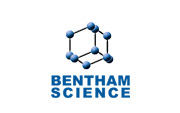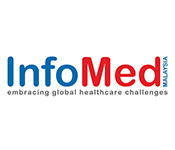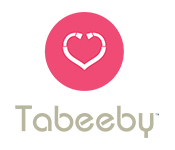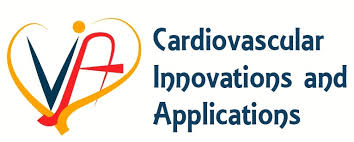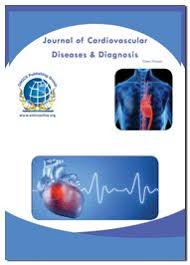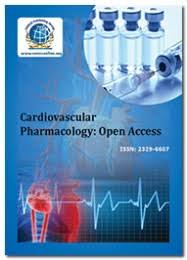Theme: Novel Perspectives on Clinical Cardiology and Heart Diseases
CVDT 2020
Organizing Committee welcomes you to attend the "3rd International Conference on Cardiovascular Diseases and Therapeutics" during April 01-02, 2020 Paris, France. This is an excellent opportunity for the delegates from Institutes and Universities to interact with the world class Scientists. The main theme of the conference is “Novel Perspectives on Clinical Cardiology and Heart Diseases”.
CVDT 2020 will be an investigation of new research Innovation in the field of Cardiology and spread the most recent advancements in heart diseases prevention and rehabilitation. Argument on the new technology enhancement in the field of Cardiovascular Disease and current practices in Cardiovascular therapy, Cardiac progenitor cells, Hypertension for the primary care clinician, Stent procedure, Balloon Valvuloplasty, Coronary thrombectomy, Heart failure, Congestive heart failure, Noninvasive cardiac imaging, Sports Cardiology and more. Differentiating heart disease and other cardiac conditions constitute a team of healthcare professionals, of which the Cardiology technologist is a key player.
Cardiology Conferences will provide a comprehensive update on all medical, surgical, interventional, and electrophysiological topics in cardiology and also provides the opportunity for clinicians, scientists, doctors and researchers from all over the world to gather and learn the latest advancement in the field of cardiology and healthcare and to exchange scientific ideas and experiences in distinctive environment.
Experts with international and national reputations in various cardio sub-specialties will address the practice patterns, latest guidelines and solutions in cardiovascular medicine. The global cardiology market is expected to grow at a strong CAGR during the forecast period of 2014 to 2020 and is estimated to be worth $2,100 million by 2020. Rising exploration funding majorly driven by Market for cardiology and from the governments and the private investors, increased demand for personalized medicine in the Europe and USA, and the increasing need for the toxicology testing.
Track 01: Heart Rhythm and Arrhythmia
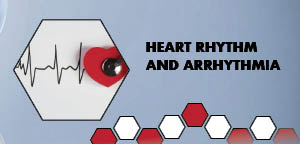
Ventricular Fibrillation
Bradycardia
Tachycardia
Atrial Fibrillation
Track 02: HIV and Heart Disease
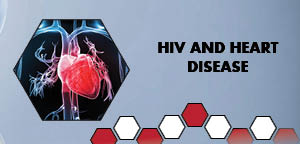
CardioVascularDisease affects the health of your blood vessels and heart and it leads to heart attacks and stroke. If you Think that these are the problems that affect Older people only. However, The Emerging Heart Research suggests that HIV infection increases the risk for Cardiovascular disease including Stroke, and Heart attacks even in the younger Generation. So, regular checking can be done by our doctor for our Overall body And Cardio Vascular health should be part for our healthy Being life . Getting on treatment for HIV is one of the best things we can do to stay healthy and Active in the daily life.
Myocardial Disease
Atherosclerosis
Coronary heart disease
Heart failure
Track 03: Hypertension and Arterial Hypertension
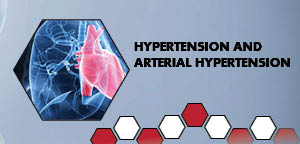
Pulmonary Arterial hypertension, or PAH It is a type of high blood pressure which affects the Arteries in lungs and the right side of your heart. It is a very critical condition that can change your day to day routine life. When you get the right diagnosis or treatment, though, you can get the care you need to ease your symptoms AH and heart pumps the blood through our Arteries and sending Oxygen to all parts of our body. In a single heart beat the left side of our heart sends out blood to your body and returns to the right side of your body and then the Right side pumps through Pulmonary artery to lungs where it Swaps the Carbon dioxide for the Oxygen. The Oxygen filled blood goes back to the left side of the Heart, and the process will start again with the next heart beat.
Coronary artery atherosclerosis.
Hypertrophic cardiomyopathy.
Athlete's heart (with LVH)
Congestive heart failure due to other etiologies.
Atrial fibrillation due to other etiologies.
Diastolic dysfunction due to other etiologies.
Track 04: Heart Disease and Nutrition
A healthy diet is a major factor in reducing your risk for heart disease.
A healthy diet and lifestyle can reduce your risk for:
Heart disease, heart attacks, and stroke, Conditions that lead to heart disease, including high cholesterol, high blood pressure, and obesity Other chronic health problems, including type 2 diabetes, osteoporosis, and some forms of cancer
Track 05 : Women and Heart Disease
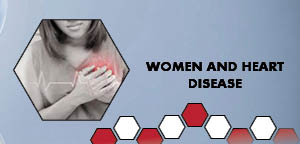
Heart disease is the leading killer of women in USA. Each year more women die of heart attack or heartdisease than men, yet heart disease and related risk factor is often missed in the women. Symptoms of Coronary artery disease and heart attack, for example, are often different in the women than the male counter parts. Women are also less likely to prefer optimal treatment for certain heartconditions.
Shortness of breath
Pain in arms
Nausea & vomiting
Sweating
Unusal fatigue
Neck, jaw, upper back, shoulder & abdominal discomfort
Track 06 : Robotically Assisted Heart Surgery

It is a type of minimally invasive heart surgery which is performed by a Cardiac surgeons. Robotically Assisted heart Surgery is also called as Closed Chest heart surgery. The surgeons use a specially designed computer console to control the Surgical instruments on thin Robotic arms. These technology allows Cardiac surgeons to perform certain major types of complex heart surgeries with the smaller incisions and precise motion control offering patients improved outcomes.
Atrial septal defect (ASD) repair
Patent foramen ovale (PFO) repair
Removal of cardiac tumors
Track 07 : Cardiac Imaging
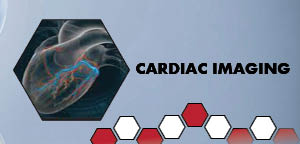
Cardiac Imaging is Non-Invasiveway to inform doctors plenty regarding the structure and functioning of a patients heart Imaging for tubing Ablations. One active space of analysis is however non Invasive imaging will guide tubing ablation procedures that modify electrical circuits within the heart to treat arrhythmias or irregular heartbeats. a number of the imaging techniques embrace X-raying exploitation X-rays tomography and ultrasound to guide a medico once activity a internal organ ablation. throughout a Cardiacablation, A tubing is rapt into the center and accustomed destroy tiny regions of the heart wall, which can be creating the heart’s rhythm irregular.
Track 08 : Pediatric Cardiology
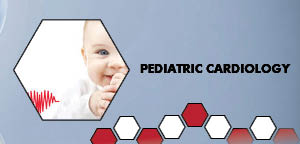
As the patients live longer life and need to be treated over the long term and the management of Pediatric cardiology problems and Congenital heart disease moves more in to main and turns in to Pediatric Cardiology for the current clinical guidance. New contributors from all over the world including 80% new to this edition present the latest challenges in the field and emphasize the adolescent and post-operative outcomes for management. Now, in full colour, this leading reference offers you everything you need to treat and manage under Pediatricheart conditions.
Pediatric Oncology
Pediatric Cardiac Tumors
Pediatric Kawasaki Disease
Pediatric Atherosclerosis
Tetralogy Of Fallot In Infants
Pediatric Pericarditis
Rheumatic heart disease
Pediatric Aortic Stenosis
Pediatric Pulmonary Atresia
Track 09: Acute Coronary Syndromes

(ACS) Acute coronarysyndrome, It is syndrome due to decreased blood flow in Coronary arteries such that the part of the heart muscle is unable to function properly and dies. The most common symptom is often radiating to the left shoulder or chest pain and crushing, central and associated with the nausea and sweating. Many people with acutecoronary syndromes present with symptoms other than chest pain, particularly older patients and women, and patients with Diabetes mellitus.
Track10: InvasiveCardiovascular Angiography and Interventional Cardiology

Interventional cardiology is a chapter of cardiology that deals particularly with the catheter based treatment of the structural Heart diseases. A huge number of procedures can be acted on the Heart by Catheterization.This most commonly includes the Insertion of a sheath into the femoral artery (but in practice any large peripheral artery or vein) and Cannulating the heart below the X-ray visualization.
Invasive blood pressure (BP) monitoring
Transesophageal Doppler (TED)
Measurement of central venous pressure (CVP)
Pulmonary artery catheterization
Arterial blood gas (ABG) analysis
Intracranial pressure (ICP) measurement
Intra-abdominal pressure (IAP) measurement
Track 11: Vascular Surgery and Vascular Diseases
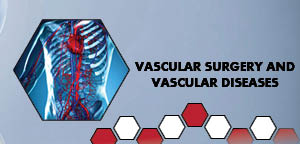
Most are familiar with heart disease and with the consequences of blockages in the vessels that carry blood to and from the heart. But few people perceive that blockages caused by a build up of a plaque and cholesterol affect more than coronary arteries. Arteries throughout body carry the oxygen rich blood away from the heart, so blockages can occur in all the arteries with serious Effects. Three of the most recognized vasculardiseases.
Angiogenic gene therapy
Oxidative stress and vascular biology
Vascular medicine
Vascular Imaging and Diagnostic Testing
Molecular Biophysics and Structural Biology
Stem Cell Biology
Track 12: Electrocardiography

(ECG) Electrocardiography is the strategy for account of Electrical action of the heart, over a day and age utilizing anodes set on skin.The terminals help in the location of moment electrical changes on the skin that emerge from the electro-physiologic example of heart muscle while depolarizing amid every heartbeat. This record called the electrocardiogram (otherwise called an ECG), gives data about the piece of the heart that stimulate every heartbeat (the pacemaker called the sino-atrial hub), the nerve conduction pathways of the heart, and the pulse and cadence. For the most part of an ECG is gotten if a heart issue is suspected.
Echocardiography is alluded to as cardiovascular reverberate delivered by the ultrasound waves which thusly make the pictures of the heart. This is a kind of ultrasound test that utilizations piercing sound waves that are sent through a gadget called a transducer. The gadget gets the echoes of the sound waves as they bound with the diverse parts of your heart. The echoes will in general make moving photos of your heart that can be seen on a videoscreen. It distinguishes cardiomyopathies, for example, hypertrophic cardiomyopathy,widened cardiomyopathy, and numerous others.
Event/loop recording
Cardiopulmonary exercise test (CPET)
Signal-averaged electrocardiogram
Heart rate monitor
Pacemaker monitoring
Electric axis of the heart
Medical therapies and procedures
Cardiac surgery and hybrid procedures
Transthoracic echocardiography
Track13: Cardiovascular Diabetology Drugs and Therapy
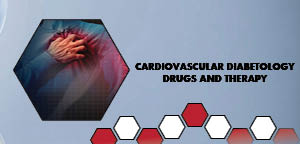
Cardiovascular Drugs encompass a large number of prescription medications that are used to control the heartdisease. It is complicated group of Drugs with many being used for multiple heart conditions. examples, Propranolol is a common cardiovascular drug that can be used to treat hypertension as well as arrhythmias. You may also encounter the patients who have one or more cardiovascular conditions such as CongestiveHeartFailure, arrhythmia and an hypertension.
Diabetes Mellitus and Stroke
Abdominal Obesity
Vascular dementia
Abnormal cholesterol and high triglycerides
Haemorrhagic Strokes (Bleeds)
Metabolic syndrome
Track 14: Cardiovascular Nursing
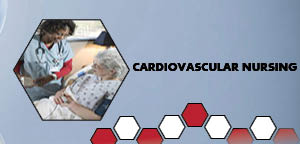
Cardiovascular Nurses work in many different environments, including cardiac catheterization, intensive care units (ICUs), coronary care units (CCUs), operating theaters, heart rehabilitationcenters, cardiac surgery departments, clinical research, and cardiovascular intensive care units. Cardiac nursing is a special nursing field which works with patients who suffer from different conditions of the cardiovascularsystem. Cardiac nurses help treat and care conditions such as unstable angina, coronary artery disease, cardiomyopathy, congestive heartfailure, infarction of myocardium and cardiac arrhythmia under the direction of a cardiologist. Cardiac nurses perform post operative treatment on surgical unit stress test evaluations, cardiac monitoring, vascular monitoring, and health evaluations. Cardiac nurses work in various kinds of environments, involving catheterization of heart, intensive care units (ICU), coronary careunits (CCU), operating theatres, cardiac rehabilitation centers, clinical research, wards for cardiac surgery, (CVICU) cardiovascular intensive care units, and cardiac medical wards.
Hemodynamic monitoring
Monitoring cardiac and vascular readings
Intensive hemodialysis
Cardiac remodeling
Track15: Cardiac Surgeries and Cardiac Transplantation
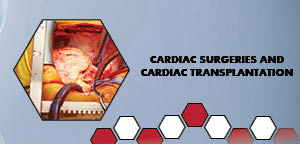
Cardiovascular surgery or Cardiacsurgery, is the surgery of heart. It is often carried out to treat the complications of ischemic heart disease to correct congenital heart disease or to treat Valvular heart disease due to the various causes, which include rheumatic heart disease, endocarditis, and Atherosclerosis. Other surgeries include Minimally Ventricular Assist Devices (VADs), Invasive Heart Surgery, hearttransplantation and much More. Healthy valves open and close in a specific ways as the heart pumps blood. Each valve has one set of the flaps called leaflets. The leaflets open to allow blood to pass from one heart apartment into another or into the arteries. Then the leaflets close tightly to cease blood from flowing backward. Heart surgery is applied to fix the leaflets that do not open as wide as they should, These can only happen if they become thick or stiff or join together. As a result, its not enough blood flows through the valve.
Heart bypass surgery
Heart valve surgery
Surgery to correct heart defect present at birth
Track 16 : Case Reports on Cardiology
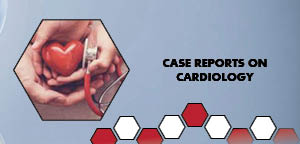
Cardiology case reports give appropriate assemblage for all the Cardiologists by rendering its important and clinical cases of late Occurrence. Studying from medical cases provides valuable experience for students, clinicians, and paramedical staff -members. Rare medical report and the conditions discovered through the latest methods of examination are reinforced. Furthermore, studying diagnostic methods from medical cases have interpretation of symptom is significant to train and increase the processes which are to be used in the Clinical field.
Aortic Diseases
Infective Endocarditis
Disorders due to Coronary Circulation
Myocardium and Pericardium
Coronary Artery Disease
Track 17: Sports and Exercise Cardiology

Sport and exercise cardiology is a branch of medicine related to the exercising individuals and cardiovascularcare of athletes which deals with physical fitness and the treatment, prevention of injuries related to sports and exercise by advancing the knowledge through clinical expertise and research.In short term, the risk of adverse events can be associated with the exercise instead of overcoming the favourable long-term effects on well-being. Various problems can be arise for the cardiologists in evaluating the athletes due to adaptations imposed by exercise.
Track 18: Cardiology Future Medicine
Cardiology is a field of medicine dealing with heart disorders as well as parts of the circulatory system. The area includes medical diagnosis and treatment of congenital heart defects, Coronary artery disease, Heartfailure,Heart valve disease, and electrophysiology. It is likely that cardiology will continue to sub-specialize in the pursuit of technical virtuosity and clinical excellence. This situation will initially aggravate the escalation of costs and intensify the labor shortage.
General clinical cardiologists
Pediatric cardiologists
Cardiovascular Anesthesiology
Cardiovascular Pathology Research
Preventive cardiologists
Track 19 : Devices / CRT / ICD / Surgery

Implantable devices has been used for the decades to treat the heart disease. The first pacemaker was implanted over 40 years Ago, and the implantable defibrillators were first used in early 1980 years . But the last few years have witnessed the surge in both type of devices being tested for heart-failure treatment, and in the optimism of experts about their usefulness. An (ICD) Implantable Cardioverter defibrillator is a microcomputer that is implanted under the skin of your upper chest area. It is small to fit in the palm of your hand. A cardiac resynchronization therapy implantable Cardioverterdefibrillator (CRT-D) is a type of specialized ICD used to treat the heart failure. It monitors the heart rate and delivers therapy in the form of small electrical pulses. Getting the (CRT) cardiac resynchronization therapy heart device is not an open-heart procedure. Before surgery, the medication is usually given to make you sleepy and comfortable. The procedure would be performed under local anesthesia.
Electrocardiogram & Echocardiography
Holter Monitoring
Cardiac Computerized Tomography (CT) scan
Cardiac Magnetic Resonance Imaging (MRI)
Chest X Ray
Track 20 : Cardio-Oncology
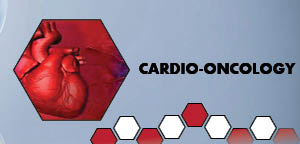
Cardio-oncology is the heartcondition in patients who have been treated for cancer. When patients take certain types of cancer drugs or any other radiation treatment. Then the cardiologists estimate the development of heart conditions potentially in the patients.. They also help oncologists in treating the patients by watching the heart conditions carefully and diagnosing the heart trouble earlier to the treatment.
Advanced cancer therapy
Heart malignancy
Intra-cardiac tumor
Cardiomyopathy
HER2-directed therapy
Vascular toxicities
Chemotherapy-related cardiac dysfunctions
Track 21 : Current Research in Cardiology
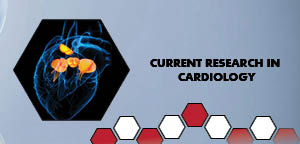
Advances in medicine means that if CHD is detected at the early stage it can be treated successfully to extend survival rate. Successful treatment is more likely if disease is detected at its earliest stages. Our current research work focuses on the early detection of CHD in order to halt or reverse the progress of the disease. The On-going research includes the pioneering the use of the heart scanning in the early diagnosis of heart disease in diabetics and Development of Nuclear Cardiology techniques for the detection of heart disease and Drug development and evaluation of treatments used in heart disease the Identification of novel biological markers to predict the presence of heart disease and Analysis of ethnic and socio-economic differences in heart disease risk.
General clinical cardiologists
Pediatric cardiologists
Cardiovascular Anesthesiology
Cardiovascular Pathology Research
Preventive cardiologists
Cardiology is a branch of medicine dealing with disorders of the heart be it human or animal. The field includes medical diagnosis and treatment of the congenital heart defects and coronary artery disease, heart failure, valvular heart disease and electrophysiology. Physicians who are specialized in this field of medicine are called Cardiologists, a specialty of internal medicine.
The organizing members is gearing up for an exciting and informative conference program including plenary talks, symposia, workshops on a variety of topics, poster presentation and various programs for participants from all over the globe. We invite you to join us at the CVDT conference , where you will be sure to have a meaningful experience with scientists and doctors from around the world. All Organizing members of the CVDT 2020 look forward to meet you in Paris France.
Importance and Scope: -
CVDT 2020 will be the best platform for all the cardiologists, scientists, oncologists, electro physiologists, nurses, surgeons, research scholars, students who are working in this field to exchange their knowledge related to the Cardiology and Cardiac Surgery. The international events is an effort to find an alternative for invasive and imaging technique against heart diseases and heart failure conditions in children & adults.
Growth of Cardiology Market: -
North America is the dominant regional market for the heart diagnostics with a share of the approximately 47% of the overall heart diagnostics market in terms of revenue in 2018, followed by Europe which accounted for around 38% share in the market and then by Asia accounting for 16% share.
Scope and Importance: -
A prospective survey of patients with (VHD) valvular heart disease .
- Coronary angiography was used in 85.2% of the patients before intervention.
- The (EHS) Euro Heart Survey program has been initiated order to provide the quantitative information on cardiovascular diseases.
- To prevent the incidence of (CV) cardiovascular disease, by implementing strategies to reduce the burden of Cardiovascular risk factors and incidence of Cardiovascular disease and develop the appropriate models for healthy CV lifestyle.
Conference Highlights
- Heart Rhythm and Arrhythmia
- HIV and Heart Disease
- Hypertension and Arterial Hypertension
- Heart Disease and Nutrition
- Women and Heart Disease
- Robotically Assisted Heart Surgery
- Cardiac Imaging
- Pediatric Cardiology
- Acute Coronary Syndromes
- InvasiveCardiovascular Angiography and Interventional Cardiology
- Vascular Surgery and Vascular Diseases
- Electrocardiography
- Cardiovascular Diabetology Drugs and Therapy
- Cardiovascular Nursing
- Cardiac Surgeries and Cardiac Transplantation
- Case Reports on Cardiology
- Sports and Exercise Cardiology
- Cardiology Future Medicine
- Devices / CRT / ICD / Surgery
- Cardio-Oncology
- Current Research in Cardiology
To share your views and research, please click here to register for the Conference.
To Collaborate Scientific Professionals around the World
| Conference Date | April 01-02, 2020 | ||
| Sponsors & Exhibitors |
|
||
| Speaker Opportunity Closed | Day 1 | ||
| Poster Opportunity Closed | Click Here to View | ||
Useful Links
Special Issues
All accepted abstracts will be published in respective Our International Journals.
- Cardiovascular Diseases & Diagnosis
- Cardiovascular Pharmacology: Open Access
- Journal of Vascular Diseases and Treatment
Abstracts will be provided with Digital Object Identifier by

